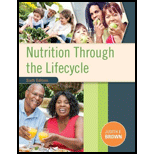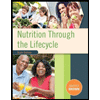
Concept explainers
To mention: Various causes of engorgement.
Introduction: Chronic mastitis is a breast disease that leads to prolonged inflammation. This disease occurs in the case of a mother who avoids breastfeeding. Breastfeeding is the most important and natural way to feed a newborn baby. Mother’s milk provides all the nutrition and immunity to the baby, which is needed during the first six months. Breastfeeding satisfies their hunger and thirst, and provides the proper amount of proteins, minerals, and immunity to the child, which helps to deal with the environment.
Explanation of Solution
Person B was pregnant at the age of 29 and during her pregnancy she had reported experiencing breast enlargement. After two hours of postpartum, her newborn was put to the breast and the infant latched well according to the mother. The infant was nursed over the initial 3-4 days of postpartum in every two hours. Person B was noticed with heavy breast during the third day of postpartum and gradually, she felt painful engorgement by the fourth day of postpartum. During this time, she also reports painful, burning sensation and cracks in her nipples. Due to breast engorgement, the infant is unable to latch properly to the breast. This makes the infant irritable. Person B consulted a lactation consultant and follows engorgement management. On the fifth day, the engorgement caused discomfort. The nipples of Person B became more cracked and painful because the vigorous latching of the infant. In the case of the infant, all the symptoms show about the adequate intake of nutrition. By the seventh day of postpartum, Person B had mastitis and consulted a lactation consultant for treatment. By the fourteenth day, her symptoms became very less and she felt much better. During the third week, while feeding the infant, she still had inflammation, a healing crack, and still some symptoms of chronic mastitis were present.
Again, she consulted the lactation consultant who helped Person B to position the infant in a comfortable way that mostly allows the drainage of the inflamed area and recommends her to pump the affected side to relieve the discomfort during breastfeeding. Then, Person B continued to show the signs of oversupply like breast feeling full after feeding and excess leakage of milk between feedings. Her lactation consultant provided techniques to decrease the overproduction of milk. After 10 days of burning pain in the nipples, Person B is treated with fluconazole for a yeast infection. Again after the seventh week of postpartum, Person B consulted the lactation consultant to report about another mastitis condition. Her consultant prescribed dicloxacillin for treatment. During the eighth week of postpartum, her mastitis condition resolved but the pain was still present in her nipples. Also, she is improving from mastitis condition.
In this case study, the causes of engorgement in breasts of Person B are as follows:
- Instability between the demand and the supply of breast milk
- Excess production of breast milk
- Improper breastfeeding techniques
- Infrequent or ineffective removal of milk from the breast
Want to see more full solutions like this?
Chapter 7 Solutions
Nutrition Through the Life Cycle (MindTap Course List)
- The term _______________________ means pertaining to birth. natal perinatal postnatal prenatalarrow_forwardA 26-year-old female complained of severe, dull, aching pain, and cramping in the lower abdomen. There were no other physical findings. A laparoscopy revealed the presence of ectopic endometrial tissue on the uterine wall and ovaries. Danazol (a synthetic androgen and inhibitor of gonadotropins), 600 mg/day, was prescribed for up to nine months to inhibit ovulation, suppress the growth of the abnormal endometrial tissue, and achieve appreciable symptomatic relief, with a 30% possibility of conception after withdrawal of the therapy. Top of Form What is ectopic endometrial tissue?arrow_forwardA 26-year-old female complained of severe, dull, aching pain, and cramping in the lower abdomen. There were no other physical findings. A laparoscopy revealed the presence of ectopic endometrial tissue on the uterine wall and ovaries. Danazol (a synthetic androgen and inhibitor of gonadotropins), 600 mg/day, was prescribed for up to nine months to inhibit ovulation, suppress the growth of the abnormal endometrial tissue, and achieve appreciable symptomatic relief, with a 30% possibility of conception after withdrawal of the therapy. Compare the hormonal controls of the male reproductive cycle with the hormonal controls of the female reproductive cycle. How are they the same? How are they different?arrow_forward
- A 26-year-old female complained of severe, dull, aching pain, and cramping in the lower abdomen. There were no other physical findings. A laparoscopy revealed the presence of ectopic endometrial tissue on the uterine wall and ovaries. Danazol (a synthetic androgen and inhibitor of gonadotropins), 600 mg/day, was prescribed for up to nine months to inhibit ovulation, suppress the growth of the abnormal endometrial tissue, and achieve appreciable symptomatic relief, with a 30% possibility of conception after withdrawal of the therapy. Top of Form What is the rationale for using danazol, a gonadotropin inhibitor?arrow_forwardA 26-year-old female complained of severe, dull, aching pain, and cramping in the lower abdomen. There were no other physical findings. A laparoscopy revealed the presence of ectopic endometrial tissue on the uterine wall and ovaries. Danazol (a synthetic androgen and inhibitor of gonadotropins), 600 mg/day, was prescribed for up to nine months to inhibit ovulation, suppress the growth of the abnormal endometrial tissue, and achieve appreciable symptomatic relief, with a 30% possibility of conception after withdrawal of the therapy. Top of Form Why do you think oral contraceptives could also be used as a treatment?arrow_forwardMrs. Vanessa Narcisoa 22 year old Gravida 1 who vaginally delivered her first infant The vaginal delivery was uncomplicatedhour after delivery, which of the following findings would the Nurse Marina expect in a patient who didn't have complications? Firm uterus; scant amount of lochia serosa Boggy uterus; heavy amount of lochia rubra with small clots Firm uterus; heavy amount of lochia rubra with small clots Boggy uterus; moderate amount of lochia serosaarrow_forward
- Mrs. Narciso 35-old wearing an intrauterine contraceptive device complains of amenorrhea of 5 weeks duration Serum pregnancy test is positive with the presence of this device, Mrs. Vanessa is at a significantly increased likelihood of experiencing which of the following? Septic abortion Spontaneous abortion Fetal malformations Ectopic pregnancy Placental abruptionarrow_forwardTracy is a 25-year-old woman, Roman Catholic, from a semi-remote First Nation Community, L.A., Laguna. She is 37weeks pregnant, 65 kgs and attending a prenatal visit with her community nursetoday. This is her third pregnancy and she has attended all previous visits with her mother and/or Frank, the father of her baby. She stated that she experience minimal vaginal discharge, with mild contraction.Tracy is very quiet and makes limited eye contact during visit. Tracy’s pregnancy has been fairly uneventful. Laboratory values (Complete blood count (CBC), hepatitis B Screening (HBSag) ,Urinalysis(UA), ABO typing) and vital signs have been within normal limits. A 20-week ultrasound found no abnormalities of fetal anatomy. During her visit the nurse told her the labor signs and symptoms and when to go for hospitalization.arrow_forwardMrs. Aunor a 43-year-old G1PO comes into the Maternity Center for her routine OB visit at 38 weeks. She denies any problems since she was seen the week before She reports good fatal movement and dentes any leakage of fluid per vagina, vaginal bleeding or regular uterine contractions. She reports that sometimes she feels crampy at the end of the day when she gets home from work, but this discomfort is alleviated with getting off her feet. The fundal height measurement is 36 cm; it measured 37 cm the week before. Her cervical examination is 2 cm dilated. Which of the following is the most appropriate next step in the management of this patient? a. Instruct the patient to return to the center in 1 week for her next routine visit b. Send the patient for a sonogram to determine the amniotic fluid index c. Order the patient to undergo a nonstress test d. Do a ferm test in the office e. Admit the patient for induction caused by diagnosis of fetal growth legarrow_forward
 Nutrition Through the Life Cycle (MindTap Course ...Health & NutritionISBN:9781305628007Author:Judith E. BrownPublisher:Cengage Learning
Nutrition Through the Life Cycle (MindTap Course ...Health & NutritionISBN:9781305628007Author:Judith E. BrownPublisher:Cengage Learning Nutrition Through The Life CycleHealth & NutritionISBN:9781337919333Author:Brown, Judith E.Publisher:Cengage Learning,
Nutrition Through The Life CycleHealth & NutritionISBN:9781337919333Author:Brown, Judith E.Publisher:Cengage Learning,- Case Studies In Health Information ManagementBiologyISBN:9781337676908Author:SCHNERINGPublisher:CengageEssentials Health Info Management Principles/Prac...Health & NutritionISBN:9780357191651Author:BowiePublisher:CengageUnderstanding Health Insurance: A Guide to Billin...Health & NutritionISBN:9781337679480Author:GREENPublisher:Cengage





